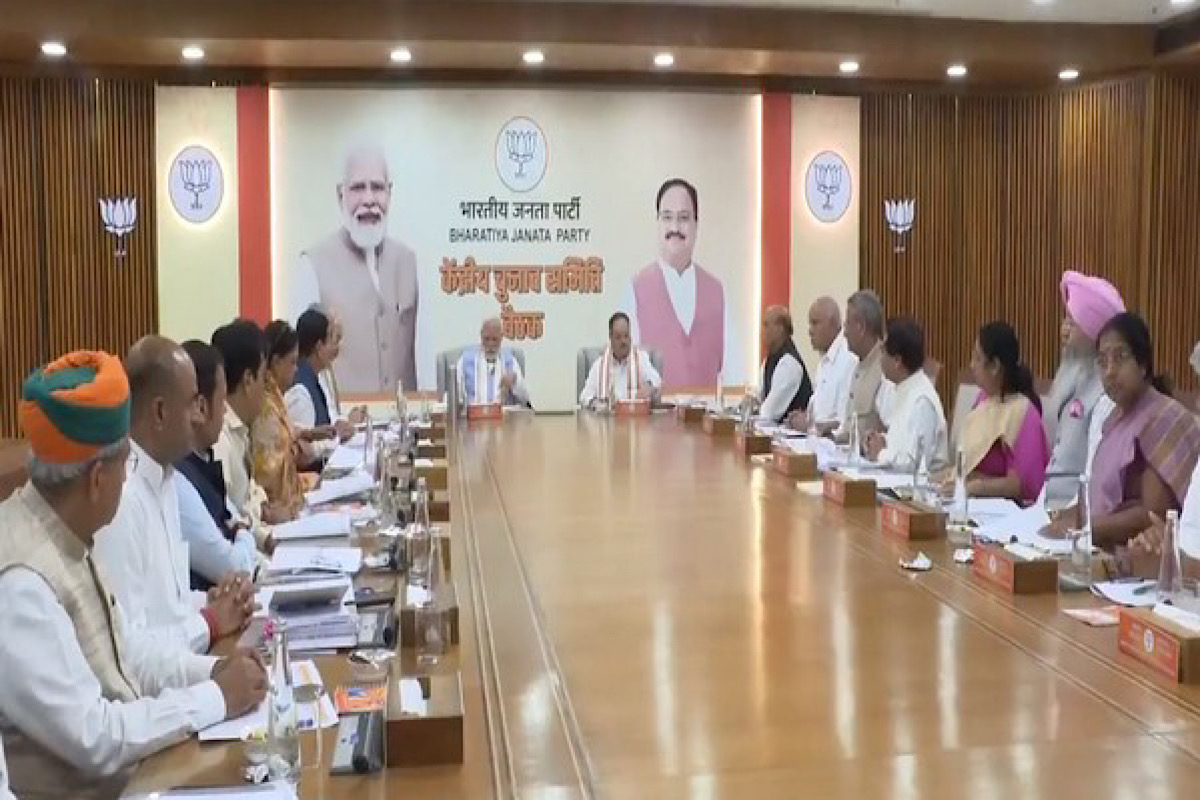Rajasthan govt launches Adult BCG campaign in Bhilwara & Jhunjhunu to eradicate TB
Taking a step further to achieve total eradication of tuberculosis, the Rajasthan government on Tuesday launched the Adult BCG vaccination campaign.
Prime Minister Narendra Modi chaired a meeting of the Bharatiya Janata Party’s (BJP) Central Election Committee to finalize its candidates for the forthcoming assembly elections in Rajasthan and Chhattisgarh.

BJP CEC discusses candidates for Rajasthan, Chhattisgarh Assembly elections (photo: ANI)
A group of Bharatiya Janata Party (BJP) leaders, led by Prime Minister Narendra Modi, gathered at the party’s central headquarters in the nation’s capital on Sunday. Their purpose was a vital one: to convene for the Central Election Committee meeting, a pivotal step in the process of selecting candidates for the forthcoming assembly elections in Chhattisgarh and Rajasthan.
Among those in attendance was former Rajasthan Chief Minister Vasundhara Raje, as well as prominent party leaders Gajendra Singh Shekhawat and Pralhad Joshi. The meeting held substantial weight as it aimed to finalize the roster of candidates who would represent the BJP in the impending electoral battles.
Advertisement
Earlier in the day, Union Home Minister Amit Shah had already made his way to the residence of BJP Chief JP Nadda, setting the tone for this crucial gathering.
Advertisement
While the BJP had previously announced a lineup of 21 candidates for Chhattisgarh and 79 for Madhya Pradesh, the anticipation was palpable regarding the unveiling of candidates for the 200-member Rajasthan assembly.
Earlier in the day, core groups of leaders from Rajasthan and Chhattisgarh, including former Chief Ministers, convened at Nadda’s residence. The party, which had faced defeat in the 2018 polls in both states, was now placing its faith in “collective leadership” to reclaim power from the Congress.
The BJP had refrained from disclosing any chief ministerial candidate for the five states facing imminent elections later in the year. Even in the case of Madhya Pradesh, there had been ambiguity surrounding the potential reappointment of the incumbent Chief Minister, Shivraj Singh Chauhan.
The electoral battleground was categorized into four distinct categories. Category A encompassed seats where the BJP had consistently displayed strong performance. Similarly, Category B included seats with a mixed track record of wins and losses. Category C comprised constituencies where the BJP faced comparatively tougher challenges, and finally, Category D represented seats where the BJP had experienced consecutive defeats in the last three elections.
This crucial meeting marked a pivotal moment in the BJP’s preparations for the upcoming elections, as they sought to strategize and select candidates who could help them secure victory in these key states.
Advertisement